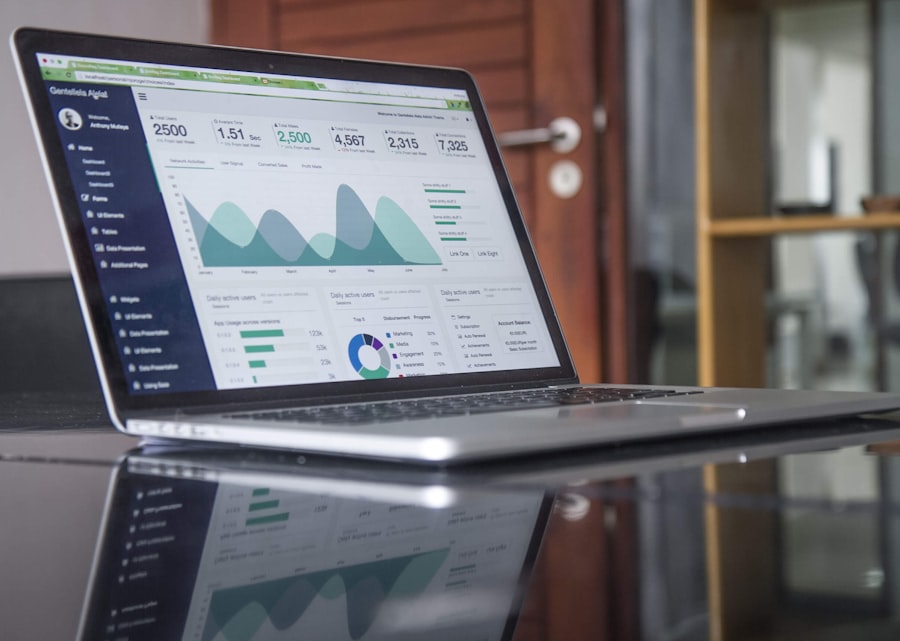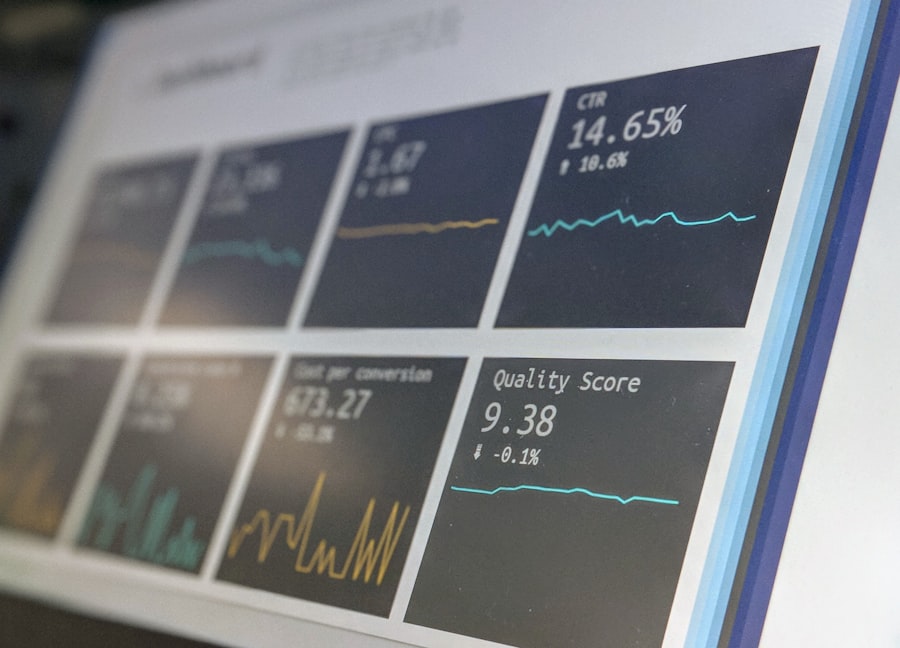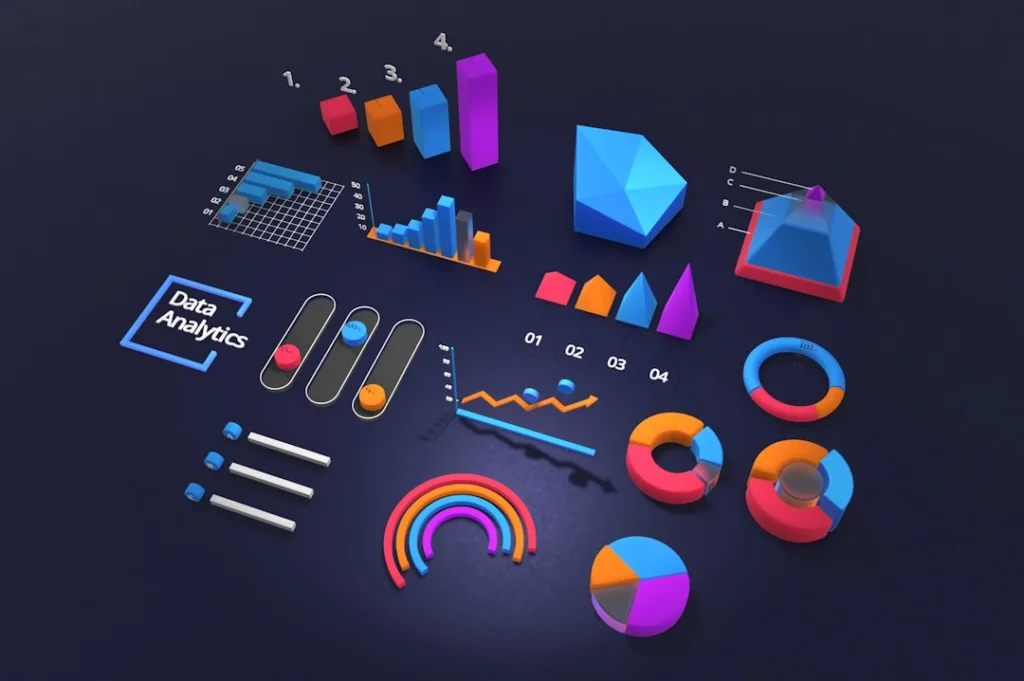Predictive analytics is a branch of advanced analytics that uses historical data, statistical algorithms, and machine learning techniques to identify the likelihood of future outcomes based on historical trends. It is a powerful tool that enables organizations to make data-driven decisions by forecasting potential scenarios and behaviors. At its core, predictive analytics seeks to answer the question: “What is likely to happen next?
By leveraging predictive analytics, businesses can optimize their strategies, enhance customer experiences, and ultimately drive profitability. Artificial Intelligence (AI) plays a pivotal role in enhancing the capabilities of predictive analytics. AI algorithms can process vast amounts of data at unprecedented speeds, uncovering patterns and insights that would be impossible for humans to detect manually.
Machine learning, a subset of AI, allows systems to learn from data and improve their predictions over time without being explicitly programmed. This synergy between predictive analytics and AI not only increases the accuracy of forecasts but also enables real-time decision-making. For instance, in marketing campaigns, AI-driven predictive models can analyze customer behavior and preferences, allowing marketers to tailor their strategies effectively.
Key Takeaways
- Predictive analytics and AI can help businesses make data-driven decisions and improve campaign performance.
- Identifying the right data for analysis is crucial for accurate predictions and insights.
- Choosing the right AI tools for predictive analytics involves considering factors such as scalability, ease of use, and integration capabilities.
- Preparing and cleaning data is essential for ensuring the accuracy and reliability of AI analysis.
- Training AI models for predictive analytics requires a combination of domain expertise and data science skills.
Identifying the Right Data for Analysis
The foundation of effective predictive analytics lies in the quality and relevance of the data used for analysis. Identifying the right data involves understanding the specific objectives of the analysis and determining which data points will provide the most valuable insights. Organizations must consider both structured and unstructured data sources.
Structured data, such as sales figures and customer demographics, is easily quantifiable and can be analyzed using traditional statistical methods. In contrast, unstructured data, including social media interactions and customer reviews, requires more sophisticated techniques to extract meaningful insights. To identify the right data, businesses should start by defining their key performance indicators (KPIs) and the questions they aim to answer through predictive analytics.
For example, a retail company may want to predict customer churn rates. In this case, relevant data might include purchase history, customer service interactions, and demographic information. Additionally, external factors such as market trends and economic indicators could also be considered to enhance the predictive model’s accuracy.
By carefully selecting data that aligns with their objectives, organizations can ensure that their predictive analytics efforts yield actionable insights.
Choosing the Right AI Tools for Predictive Analytics

Selecting the appropriate AI tools for predictive analytics is crucial for maximizing the effectiveness of data analysis efforts. The market offers a plethora of tools ranging from open-source platforms like TensorFlow and Scikit-learn to commercial solutions such as IBM Watson and Microsoft Azure Machine Learning. Each tool has its strengths and weaknesses, making it essential for organizations to evaluate their specific needs before making a choice.
When choosing AI tools, organizations should consider factors such as ease of use, scalability, integration capabilities, and support for various data types. For instance, a company with limited technical expertise may benefit from user-friendly platforms that offer pre-built models and intuitive interfaces. On the other hand, organizations with advanced data science teams might prefer open-source tools that provide greater flexibility and customization options.
Additionally, compatibility with existing systems is vital; tools that can seamlessly integrate with current databases and software will facilitate smoother workflows and enhance overall efficiency.
Preparing and Cleaning Data for AI Analysis
Data preparation is a critical step in the predictive analytics process that involves cleaning and transforming raw data into a format suitable for analysis. This stage is often time-consuming but essential for ensuring the accuracy and reliability of predictive models. Data cleaning involves identifying and rectifying errors or inconsistencies in the dataset, such as missing values, duplicates, or outliers.
For example, if a dataset contains customer ages listed as negative numbers or exceeds reasonable limits, these anomalies must be addressed before analysis can proceed. In addition to cleaning, data preparation may also involve feature engineering—creating new variables that can enhance model performance. This could include aggregating data points or transforming variables into more meaningful formats.
For instance, instead of using raw transaction amounts, a retailer might create a feature representing the average purchase value per customer over a specified period. By investing time in thorough data preparation and cleaning processes, organizations can significantly improve the quality of their predictive analytics outcomes.
Training AI Models for Predictive Analytics
Once the data is prepared and cleaned, the next step is training AI models to make predictions based on historical data. This process involves selecting appropriate algorithms that align with the nature of the data and the specific objectives of the analysis. Common algorithms used in predictive analytics include regression analysis for continuous outcomes, classification algorithms for categorical outcomes, and clustering techniques for grouping similar data points.
Training an AI model typically involves splitting the dataset into training and testing subsets. The training set is used to teach the model how to recognize patterns within the data, while the testing set evaluates its performance on unseen data. During this phase, organizations must also consider hyperparameter tuning—adjusting model parameters to optimize performance metrics such as accuracy or precision.
For example, in a marketing campaign predicting customer response rates, fine-tuning the model could lead to more accurate targeting strategies that enhance campaign effectiveness.
Implementing AI Predictive Analytics in Your Campaign

Informing Campaign Strategies
For instance, a company might use predictive analytics to identify high-value customers likely to respond positively to a specific promotion. By doing so, businesses can tailor their marketing efforts to target the most promising audience segments, increasing the likelihood of successful outcomes.
Enhancing Real-Time Decision-Making
Moreover, integrating predictive insights into campaign execution can enhance real-time decision-making capabilities. By continuously monitoring customer interactions and behaviors during a campaign, businesses can adjust their strategies on-the-fly based on emerging trends or unexpected outcomes.
Optimizing Campaign Performance
As a result, campaigns become more responsive to customer needs and preferences, ultimately leading to improved engagement rates and higher conversion levels. By leveraging predictive analytics, marketers can optimize their efforts dynamically, rather than relying solely on pre-defined plans, and achieve greater ROI from their marketing investments.
Monitoring and Evaluating AI Predictive Analytics Results
Monitoring and evaluating the results of AI predictive analytics is essential for understanding the effectiveness of implemented strategies. Organizations should establish clear metrics to assess performance against predefined KPIs. This evaluation process involves analyzing both quantitative results—such as conversion rates or revenue generated—and qualitative feedback from customers regarding their experiences with campaigns.
Regularly reviewing predictive model performance helps identify areas for improvement or adjustment. For example, if a campaign’s predicted outcomes do not align with actual results, it may indicate that the model requires retraining or that additional features need to be incorporated into the analysis. Furthermore, organizations should consider conducting A/B testing to compare different campaign strategies based on predictive insights.
By systematically evaluating results over time, businesses can refine their approaches and enhance future campaign effectiveness.
Leveraging AI Insights for Campaign Optimization
The insights generated from AI-driven predictive analytics can serve as a powerful catalyst for campaign optimization. By understanding customer behavior patterns and preferences through predictive models, marketers can tailor their messaging and offers more effectively. For instance, if predictive analytics indicates that certain customer segments are more likely to respond positively to email promotions during specific times of day, marketers can schedule their communications accordingly.
Additionally, leveraging AI insights allows organizations to allocate resources more efficiently by focusing on high-potential opportunities identified through predictive modeling. This targeted approach minimizes wasted efforts on less promising leads while maximizing engagement with those most likely to convert. Moreover, continuous learning from past campaigns enables businesses to refine their strategies over time—adapting to changing market conditions or evolving customer preferences.
Addressing Ethical and Privacy Considerations in AI Predictive Analytics
As organizations increasingly rely on AI-driven predictive analytics, ethical considerations surrounding data privacy and security become paramount. The collection and analysis of personal data raise concerns about consent and transparency; customers must be informed about how their information is being used and have control over its usage. Compliance with regulations such as GDPR (General Data Protection Regulation) is essential for maintaining trust with consumers while avoiding legal repercussions.
Moreover, organizations must be vigilant against biases that may inadvertently arise in predictive models due to skewed training data or flawed algorithms. These biases can lead to unfair treatment of certain demographic groups or perpetuate existing inequalities in marketing practices. To mitigate these risks, businesses should implement robust governance frameworks that prioritize ethical considerations throughout the predictive analytics process—from data collection through model deployment.
Integrating AI Predictive Analytics into Your Overall Marketing Strategy
Integrating AI predictive analytics into an organization’s broader marketing strategy requires alignment across various departments and functions. Marketing teams must collaborate closely with data scientists and IT professionals to ensure that insights derived from predictive models are effectively translated into actionable strategies. This cross-functional collaboration fosters a culture of data-driven decision-making within the organization.
Furthermore, organizations should prioritize ongoing training and education for marketing teams regarding AI technologies and predictive analytics methodologies. By equipping staff with the necessary skills to interpret insights accurately and apply them strategically, businesses can maximize the value derived from their investments in AI-driven analytics tools. Ultimately, successful integration hinges on fostering an organizational mindset that embraces innovation while remaining focused on delivering exceptional customer experiences.
Future Trends in AI Predictive Analytics for Campaigns
The landscape of AI predictive analytics is continually evolving as advancements in technology reshape how businesses approach data analysis and decision-making processes. One notable trend is the increasing adoption of automated machine learning (AutoML) platforms that simplify model development by automating various stages of the machine learning pipeline—from feature selection to hyperparameter tuning. This democratization of AI capabilities allows organizations with limited technical expertise to harness predictive analytics effectively.
Another emerging trend is the integration of natural language processing (NLP) techniques into predictive analytics frameworks. By analyzing unstructured text data from sources such as social media posts or customer reviews, businesses can gain deeper insights into consumer sentiment and preferences—enabling more nuanced targeting strategies in marketing campaigns. As these technologies continue to advance, organizations will have access to increasingly sophisticated tools that empower them to make informed decisions based on real-time insights derived from vast datasets.
In conclusion, as businesses navigate an increasingly complex digital landscape characterized by rapid technological advancements and shifting consumer behaviors, embracing AI-driven predictive analytics will be crucial for staying competitive in their respective markets.
If you are interested in exploring the intersection of virtual worlds and real-life opportunities, you may want to check out the article Inside the Metaverse: Where Virtual Worlds and Real-Life Opportunities Collide. This article delves into the exciting possibilities that arise when virtual and physical realities merge, offering a fascinating glimpse into the future of technology and human interaction.




